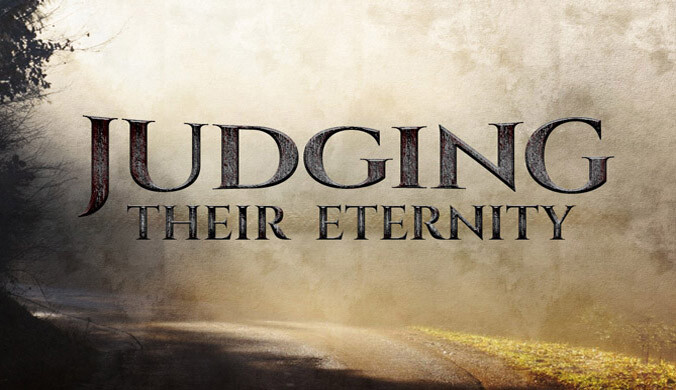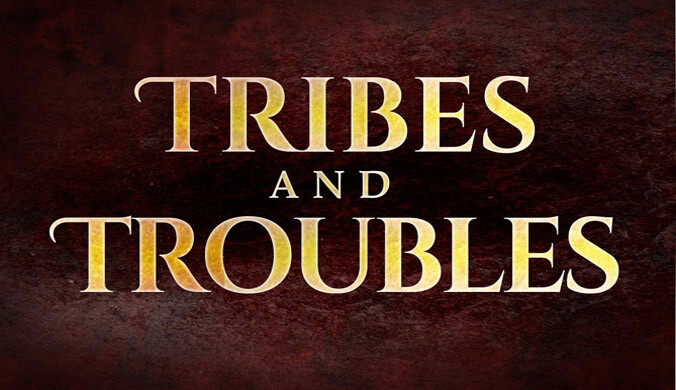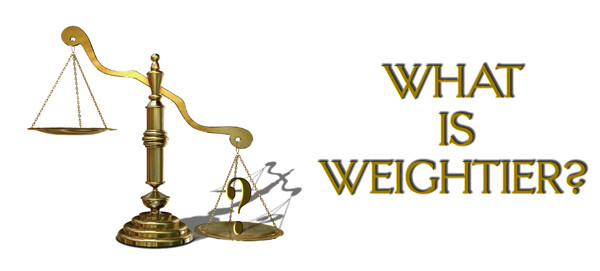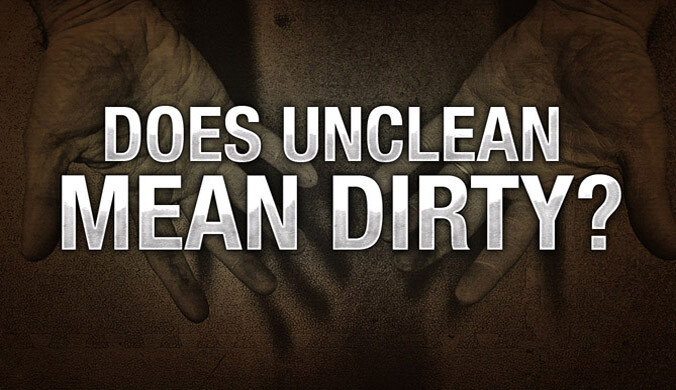119 Blog
Vows Jephthah's Daughter (Judges 11)

In Judges 11 was Jephthah's daughter an acceptable child sacrifice to YHWH?
Is Hebrew Roots A Cult?

119 Ministries is generally classified under the umbrella as being part of Hebrew Roots. Does that mean we're a cult?
A Mini-Lesson in Torah

Torah is simply God’s Divine Instructions in Righteousness without which we would have NO blueprint for moral, holy living. Has it always existed?
Sheep and Goats

Why does Scripture always use the goat and sheep comparison? What is it about goats and sheep that we can glean from by looking at these two groups of animals?
Life in the Millenium

A small glimpse into what the millennial reign will be like. Will it be bondage?
Shavuot Conference in the Netherlands 2015
This is a report from the 119 International Netherlands team on the conference they held over Shavuot.
Some Thoughts on the Appointed Times

A few thoughts related to the observance or memorialization of the appointed times of the Creator.
Fruit Trees and You

What can we learn from the Torah regarding fruit trees as it relates to being newly excited about the Torah or something the Creator has shown us?
Essential Oils, Pagan Practices, and the Torah

Where do we draw the line between doing what the pagans do and living our lives God's way?
Are We Speaking Life or Death?

How are we showing the love of God with those who disagree with our understanding of Torah?
Three Signs of the New Covenant

What are the signs of the New Covenant that indicate when we are in it?
Testing and crowns

Why are there seemingly so many trials and tribulations throughout our lives that each of us must walk through? What possibly could the purpose be of a loving Father, if indeed it is 'he' who sends them? Or is it simply, as some say, 'from the devil' - the enemy of old? It sounds much 'holier' if we claim it's from the enemy and we are being persecuted for His sake, doesn't it? But is that really true all the time? There are many scriptures that encourage us, as those who love Him, that...
Commandments, Statutes, Ordinances, and Judgments...What's the Difference?

Deuteronomy 6:1-2 6 “Now this is the commandment, the statutes and the judgments which Yahweh your God has commanded me to teach you, that you might do them in the land where you are going over to possess it, 2 so that you and your son and your grandson might fear Yahweh your God, to keep all His statutes and His commandments which I command you, all the days of your life, and that your days may be prolonged. “What is the...
Judging Their Eternity

Should we be judging and defending others based upon where WE believe they will spend eternity?
Ashes, Ashes, We All Fast Now

What's the significance of the ashes behind Ash Wednesday as celebrated by a variety of religions.
Is Your Free Will, Love or Bondage?
If choosing obedience to the Law of God putting yourself back into bondage? Some believe so.
Modesty and Lust, Who's Responsible?

Who's responsible for dressing modestly and controlling lustful desires? Is it all on the woman or are men responsible?
Misunderstood Verses of the New Testament - Week 10

Testing the typical understanding of Colossians 2:16 and James 2:14-26.
Misunderstood Verses of the New Testament - Week 9

A brief test of the common teachings surrounding Galatians 5:1, 4, and 18 to the whole Word of God.
Misunderstood Verses of the New Testament - Week 8

A brief look at Romans 10:4 and Galatians 3:25; do they really mean what we're taught they mean?
Misunderstood Verses of the New Testament - Week 7

A brief look at the common understandings of Romans 6:14 and Romans 7:6
Misunderstood Verses of the New Testament - Week 6

Testing Acts 15:18-20 and Acts 20; what do Gentiles have to do and is Sunday the new Sabbath?
Misunderstood Verses of the New Testament - Week 5

What did God make clean in Acts 10 and what is the real context of Acts 15?
Misunderstood Verses of the New Testament - Week 4

A brief look at common teachings relating to Luke 16:16-17 and John 3:16-17.
Misunderstood Verses of the New Testament - Week 3

A brief look at the common misunderstanding of Mark 3:29 and Mark 7:15.
Misunderstood Verses of the New Testament - Week 2

A quick look at verses in Matthew 12:1-8, Matthew 16:18-19, and Matthew 23:1-4.
Misunderstood Verses of the New Testament - Week 1

Do Matthew 5:17-20 and Matthew 7:15-23 mean what we are commonly taught that they mean?
Who is the Bride?
Question:I do not fully understand the implications of the remarriage of Israel to the Father by way of the Son. Are we Yeshua's Bride or the Fathers? Can we be both? This is a fantastic question. We learn in Jeremiah 3:8 that YHWH divorced the House of Israel and we also understand that the House of Israel will be brought back into covenant despite the divorce (i.e. Jeremiah 31:31-33; Ezekiel 36:26-27). We cover this process in depth in the teaching “The Lost...
Truths and Division

119 Ministries would like to thank you for all your support and confidence. We love hearing from all of you and really appreciate the confidence you have placed in us. We would like nothing more than to be able to test everything we are sent but the truth is, we are a small ministry and do not have enough man power to be able to test every article or teaching sent our way. We do want to reassure you that we do read each and every email we receive because we really enjoy...
Subjecting Ourselves to Governing Authorities?
What does Paul mean when he says we should subject ourselves to governing authorities? When we read Romans 13, it has been interpreted that we are to submit ourselves to any random government. While we do promote being a good citizen in the eyes of a secular government, it is not likely that Paul was only speaking of governments that teach and obey the Torah. First, let’s read: Romans 13:1-7 Let every person be subject to the governing authorities. For there is no authority...
Is Grace New?

It has been said that there was no grace in the Old Testament and grace did not come until Yeshua in the New Testament. Let’s test this belief using only the Torah. Genesis Genesis 6:5-8 5 Then YHWH saw that the wickedness of man was great in the earth, and that every intent of the thoughts of his heart was only evil continually. 6 And YHWH was sorry that He had made man on the earth, and He was grieved in His...
Why Bother?
It is often asked, “If the law of God is just there to prove we can’t keep it, then why bother trying?” This is a good and fair question based on a snippet of Scripture being misunderstood. The Law of God instructs us on how to live; in doing so, it does point out our sin, with sin being defined as breaking the law of God (1 John 3:4). The curse of the law, or rather the penalty of it, is death (Romans 6:23); this is known as the law of sin and death (Romans...
Tribes and Troubles Part 2

2 weeks ago we discussed the benefits of living in a tribe. This week we go over the greatest danger of them. One Very Real Danger Despite the great benefits derived from being part of a tribe, there can be some dangers, dangers that can tear what should be a unified people, apart. The largest danger comes from ourselves and our approach to the differences we have with others. Remember there are 3 things that come from 2 or more gathering together: View 1, View...
Determining a Sabbath Rest

Why does scripture say to not go out of our place on the Sabbath? Exodus 16:29See! The Lord has given you the Sabbath; therefore on the sixth day he gives you bread for two days. Remain each of you in his place; let no one go out of his place on the seventh day.” Some have interpreted this particular scripture to mean that one is not to leave their dwelling place on the Sabbath. The important word here in English is “place.” In Hebrew, the word for “place&rdquo...
Tribes and Troubles Part 1

Being part of the Hebrew Roots movement, or at least people who have some familiarity with the story of the Bible, most of us have heard of tribes, especially the 12 tribes of Israel. What is a tribe? According to marketing guru Seth Godin in his book, “Tribes”, a tribe is: “A tribe is a group of people connected to one another, connected to a leader, and connected to an idea. … A group needs only two things to be a tribe: a shared interest and a way to...
1 Timothy 1:8 and the Lawful use of the Law

As "great" as Paul was, as a Pharisee who felt he knew the law and lived by it, he realized that simply following the letter of the law wasn't right, and that he wasn't even living correctly! Note that in 1 Timothy 1:13 he even called himself a blasphemer! The point here is this, Paul realized that only living by the legality of the law wasn’t enough, he also needed the spirit. He was not discarding the requirement of obeying the law, but simply applying another aspect of it, the...
God’s Authority vs the Husband’s Authority

As more and more people come to an understanding that the Torah still applies today, friction is not uncommon, even within the same household. A bigger question sometimes comes up, one about authority, headcoverings, etc. What happens if a husband and wife have different understandings regarding this topic? Should they get divorced? The short answer is “No”, they should not get a divorce. When it comes to authority, the Word of God is the ultimate...
Sabbath pleasure?
Does Isaiah 58:13-14 mean that we cannot have any pleasure on the Sabbath? Isaiah 58:13-14 “If you turn back your foot from the Sabbath, from doing your pleasure on my holy day and call the Sabbath a delight and the holy day of the Lord honorable; if you honor it, not going your own ways, or seeking your own pleasure, or talking idly then you shall take delight in the Lord, and I will make you ride on the heights of the earth; I will feed you...
Special Update from 119 Ministries
Hi, this is Jon from 119 Ministries. As you may or may not know, I am one of the teachers and part of the team at 119. It is normally not our practice to talk to you in such a personal way, because we always have a fear of focus being placed on us (teachers) instead of who really matters, Yah, our Creator. Well, this time is different, because this message will be all about giving glory to Yah and there is nothing but praise that can be given up to Him related to this...
Running to the Wrong Goal

It was October 25, 1964, and the Minnesota Vikings were playing against the San Francisco 49ers; the 49ers have just fumbled the ball, it’s up for grabs. Defensive End Jim Marshall scoops up the ball and takes it 66 yards into the endzone...his own. This moment is remembered in sports history as “The Wrong Way Run”, where one man took the ball into the wrong endzone, celebrated by spiking the football causing it to roll out of bounds and scored 2 points for his...
Matthew 11:11 - How is the Least Greater than the Greatest?

August 14, 2014 A question common to Matthew 11 is that of what Yeshua meant in verse 11. Matthew 11:11 Verily I say to you, Among those born of women, there hath not arisen a greater than John the Baptizer: yet the small one in the kingdom of heaven, is greater than he. On the surface it appears Yeshua is saying John the Baptist is next to nothing in the kingdom of heaven. Yet this seems to contradict the context of previous passages where Yeshua is identifying John the...
The Creation Discrepancy
August 07, 2014 As people attempt to discredit the Bible, many apparent discrepancies come to light and we need to examine them. However, these discrepancies are not always found by those who don’t believe, but sometimes by those who are simply studying and trying to learn the best they are able to. Not too long ago I was speaking with my Dad about the Word and he brought up something he was attempting to figure out relating to creation in Genesis 1 and 2. His...
Priest Blessing
The Priestly Blessing from an Ancient Hebrew perspective. YHWH will kneel before you presenting gifts and will guard you with a hedge of protection, YHWH will cause his wholeness of being to shine toward you bringing order and he will provide you with love, sustenance and friendship, YHWH will lift up his wholeness of being and look upon you and he will set in place all you need to be whole and complete. See more at Ancient Hebrew Research







